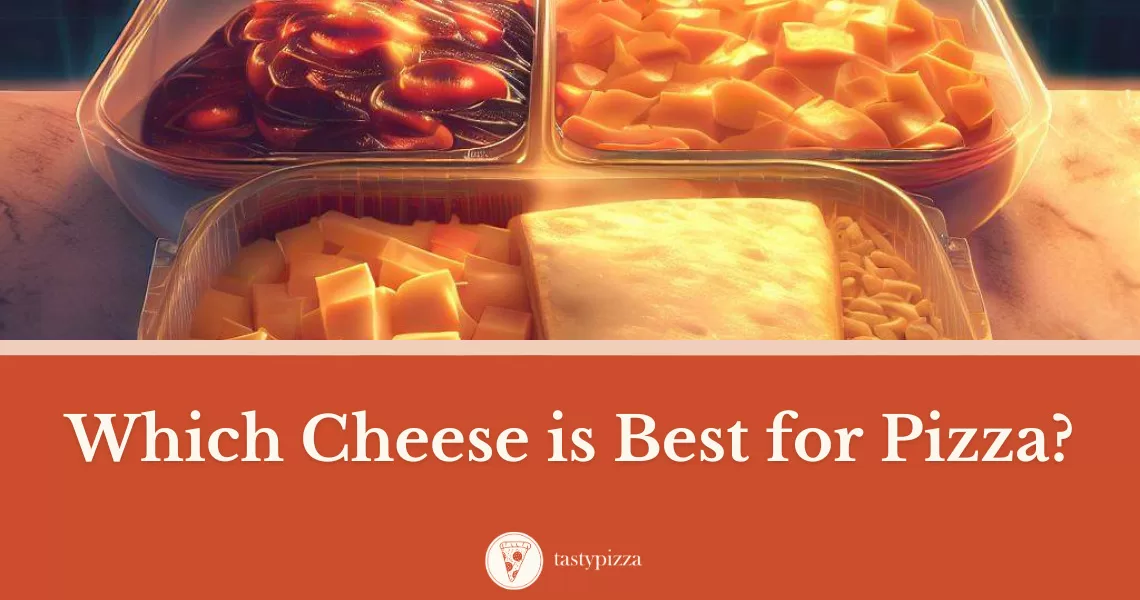Hey there, fellow pizza enthusiasts! Ready to dive into the cheesy world of pizza perfection?
Buckle up, because we’re about to embark on a mouthwatering journey where we decode the art of selecting the best cheese for pizza.
I’m your cheese-savvy guide, and together, we’ll explore the realm of melted cheese, diverse flavor combinations, and the nuances that turn a simple pie into an extraordinary slice.
Before we get into the gooey details, let’s take a sneak peek at what’s coming up.
We’re about to unravel the mysteries behind different cheese types, their melting properties, and how they harmonize or contrast with various toppings.
From mozzarella’s iconic stretchiness to the bold flavors of blue cheese, we’re covering it all.
So, let’s not keep our taste buds waiting any longer!
Table of Contents
ToggleThe Majesty of Mozzarella
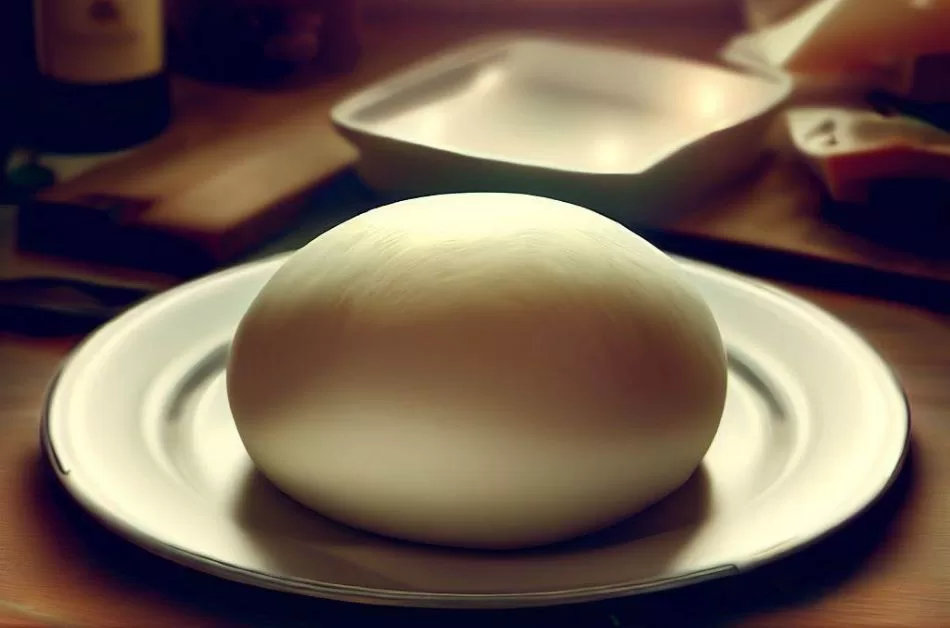
History and Origin: A Slice of Mozzarella’s Past
Ah, mozzarella – the undisputed king of pizza cheese.
Hailing from Italy, this cheese made its way from the lush pastures of Campania to the hearts (and stomachs) of pizza lovers worldwide.
But what makes mozzarella the go-to choice for that perfect pizza pull?
It’s the origin story, of course!
Picture this: fresh curds of cheese lovingly kneaded and stretched to form the delicate, creamy mozzarella we know and crave.
Traditional vs. Fresh Mozzarella
Now, here’s where things get interesting.
Traditional mozzarella, with its low moisture content, guarantees that iconic stretchiness when melted.
On the other hand, fresh mozzarella brings a mild, milky flavor to the table.
It’s a delightful choice for Margherita pizzas, allowing the flavors of the fresh basil and sweet tomatoes to shine.
The Science of Melting: Why Mozzarella?
Wondering why mozzarella steals the spotlight in the melting department?
Well, it’s all about its optimal balance of moisture and fat content.
This dynamic duo ensures that dreamy, melty consistency we all adore.
Mozzarella’s meltability can transform a pizza into a gooey masterpiece, ensuring every bite is pure cheese heaven.
READ ALSO: Our commercial-grade pizza Oven picks
The Charm of Cheddar
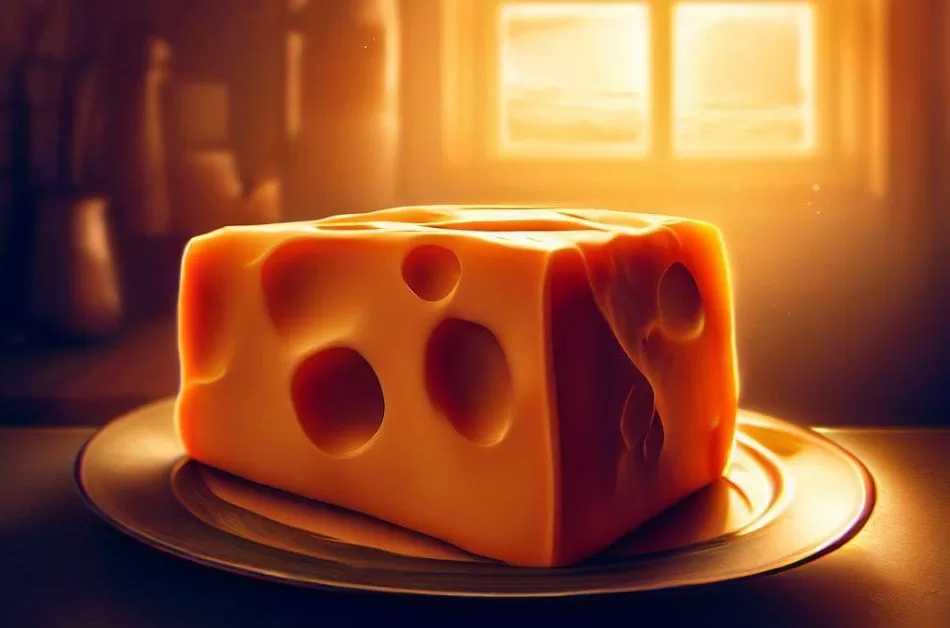
Time to switch gears and sail into the land of cheddar.
This semi-hard cheese brings its unique personality to the pizza party.
Characteristics of Cheddar: Texture, Meltiness, and Flavor Profile
Cheddar – it’s earthy, nutty, and full of character.
Whether you opt for sharp or mild, cheddar’s crumbly texture and sharp flavor can add depth to your slice.
When it comes to meltiness, cheddar brings a little bit of a challenge due to its lower moisture content.
But don’t worry; we’ve got tricks up our sleeves to make it melt like a charm.
Aged vs. Mild Cheddar: When to Use Which?
Aged cheddar brings a robust punch to the pizza, making it perfect for gourmet-style pies.
On the other hand, mild cheddar’s creamy, mellow tones complement a variety of toppings.
So, whether you’re going for a classic pizzeria flavor or something more adventurous, cheddar’s got your back.
Pairing with Toppings: Ideal Combinations
Cheddar’s versatility shines when paired with flavorful toppings like roast peppers or even tangy fruits.
The boldness of cheddar can counterbalance the sweetness, creating a symphony of flavors that dance on your taste buds.
Exploring Unique Varieties
Prepare to embark on a journey through the world of unique cheeses that add a delightful twist to your pizza experience.
Discovering Goat Cheese and Feta
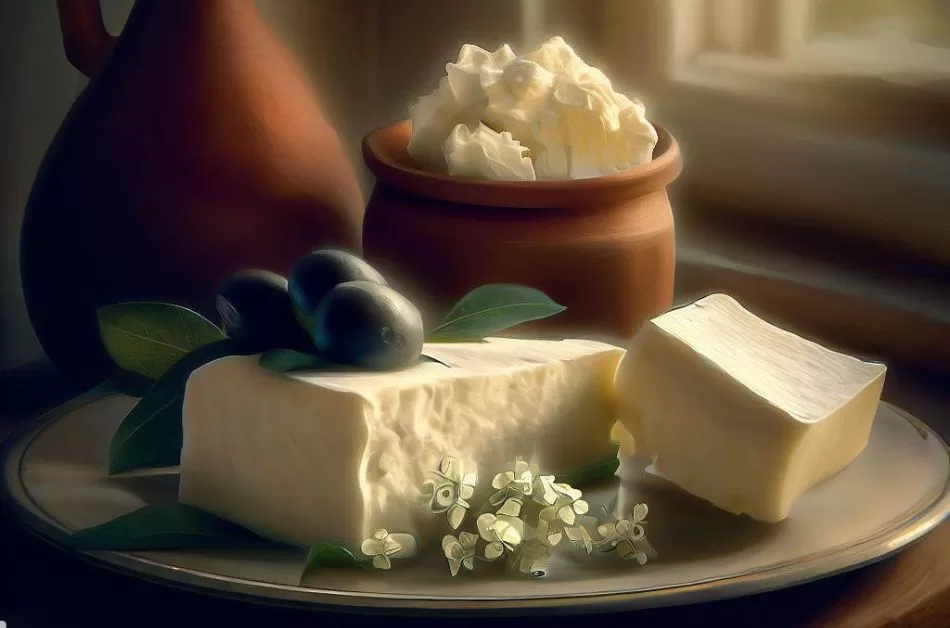
Let’s talk about goat cheese and feta – the dynamic duos of tanginess.
Goat cheese, with its distinct texture and tart flavors, pairs wonderfully with vibrant veggies and even fruits.
Feta, on the other hand, brings a salty, tangy profile that’s just begging to be paired with olives and sun-dried tomatoes.
Mildness to Tanginess: The Spectrum of Flavor
From the mild, creamy embrace of ricotta to the punchy tang of blue cheese, the spectrum of flavors is wide and exciting.
Embrace the interplay between cheeses and toppings, where the cheese’s personality harmonizes or contrasts with every bite.
The Richness of Ricotta
Speaking of harmonizing, let’s talk about the richness of ricotta.
This creamy cheese can serve as an excellent base, providing a smooth texture that beautifully supports other toppings.
Feeling adventurous?
Blend ricotta with other cheeses for a luxurious, creamy layer that blankets your pizza.
DON’T MISS: The recent review of the PYY Countertop Pizza Oven
The Boldness of Blue Cheese
Ready to venture into the world of bold flavors?
Say hello to blue cheese – a cheese with a reputation for its strong, pungent nature.
Not for the Faint of Heart: Understanding the Pungent Nature
Blue cheese isn’t your everyday slice – it’s bold, it’s pungent, and it’s an acquired taste.
The distinct blue-marbled appearance hints at the intense flavors within.
This cheese isn’t afraid to take center stage, even among a medley of other toppings.
Pairing with Sweet and Savory Toppings
Believe it or not, blue cheese can be a match made in pizza heaven when paired with sweet toppings like caramelized onions or figs.
The contrast between the sharpness of blue cheese and the sweetness of these toppings creates a unique, tantalizing experience.
The Role of Blue Cheese in White Pizzas
White pizzas, without the tomato sauce, provide a blank canvas for the flavors to shine.
Blue cheese’s creamy richness adds depth to white pizzas, allowing the complexities of the cheese to intertwine with the toppings.
The Continental Delights: European Classics
Let’s jet off to Europe and explore the classic cheeses that lend an international flair to your pizza.
Gruyère and its Golden Melt
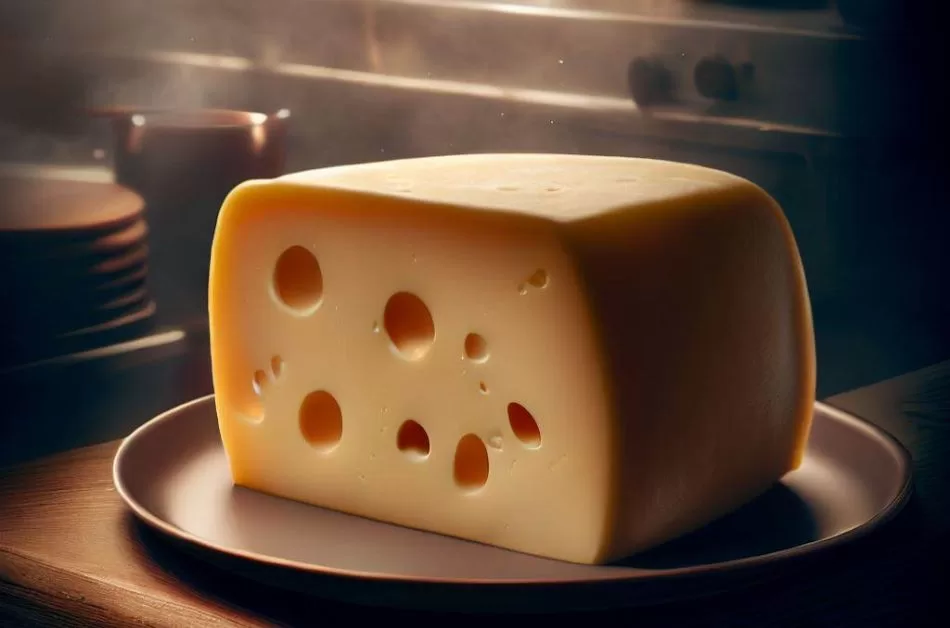
Gruyère – the cheese with a golden ticket to the world of melty goodness.
This Swiss cheese boasts a nutty, earthy flavor and a melt that’s practically a symphony in your mouth.
A Favorite for French Pizzas?
While it’s not the first cheese that comes to mind for pizzas, Gruyère’s meltability and rich flavor can make it an excellent choice for gourmet-style French pizzas.
Imagine indulging in a slice with Gruyère, caramelized onions, and slices of tender beef – now that’s an experience!
Pairing with Meats and Veggies
Gruyère’s versatility shines when paired with hearty meats like prosciutto or even roasted chicken.
Additionally, its nutty flavor complements a variety of veggies, adding a layer of depth to your pizza creation.
The Allure of Asiago
Our next European contender: Asiago – an Italian cheese with a unique dual personality.
Melt and Crunch: A Dual Experience
Asiago offers a melt that’s as smooth as a serenade and a crunch that’s as satisfying as a standing ovation.
This dual-textured cheese is like a treasure hunt for your taste buds.
Combining with Other Cheeses for a Flavorful Punch
For an explosion of flavors, combine Asiago with other cheeses like Parmesan and cheddar.
The result?
A blend that’s like a culinary fireworks display on your pizza.
Provolone: The Understated Star
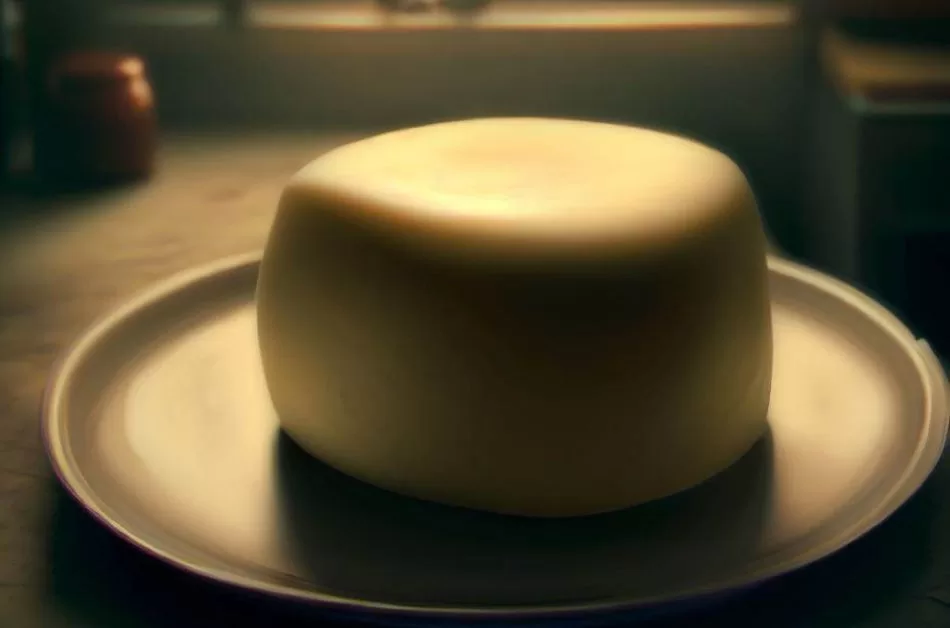
Introducing provolone – a cheese that often plays second fiddle, but its unique qualities deserve the spotlight.
Characteristics and Melting Magic
Provolone’s semi-hard nature gives it a melty-stretchy quality that’s perfect for that gooey, messy strands we all love.
It’s a cheese that’s equally at home in the pizzeria or your kitchen.
Sharpness and Depth in Flavor
Provolone’s assertive flavor provides a counterpoint to your toppings, giving your slice a distinctive profile that elevates each bite.
Ideal for Meat-Heavy Pizzas
With its robust flavor, provolone can hold its own against meat-heavy toppings, adding an extra layer of complexity to your carnivorous creations.
The Craft of Combining Cheeses
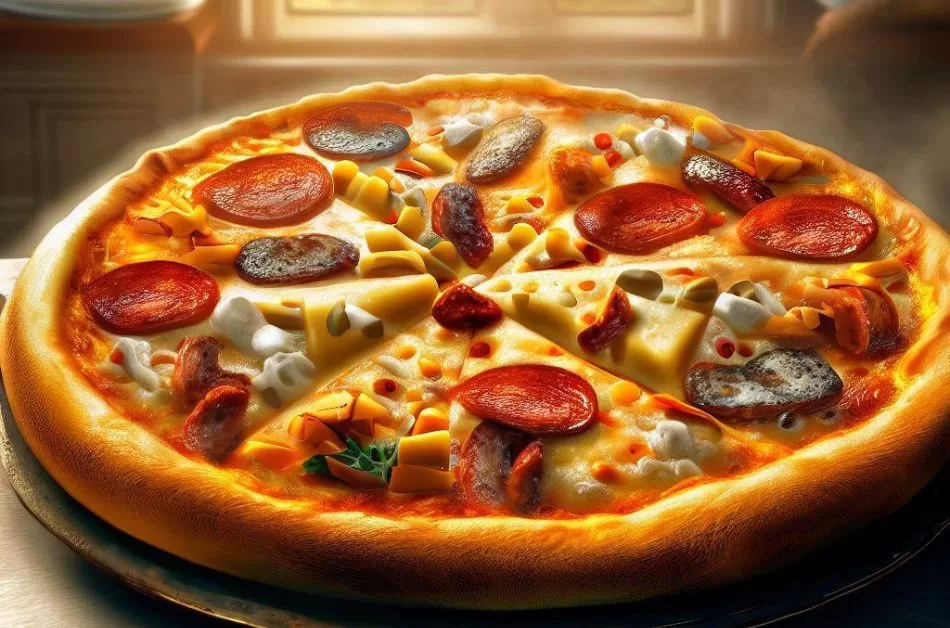
Now that we’ve delved into the world of individual cheeses, let’s talk about the magic that happens when you blend them together.
Two is Better than One: The Art of Cheese Blending on Pizza
The art of cheese blending is like crafting a symphony of flavors.
When you combine different cheeses, you’re creating a palate-pleasing harmony that’s unique to your pizza.
Harmonious Pairings and Flavor Balances
Pairing cheeses isn’t just about throwing them together; it’s about finding the balance that complements your toppings.
A blend of mozzarella and cheddar, for instance, can create a perfect marriage of meltiness and flavor.
Avoiding Overwhelm: Pitfalls to Steer Clear Of
While cheese blending can lead to greatness, there’s a fine line between flavor harmony and flavor overload.
Remember, moderation is key to ensuring each cheese’s personality shines through.
For the Small Business Owners: Cost-effective yet Tasty Options
Are you a pizza-loving entrepreneur looking for the perfect cheese that won’t break the bank?
We’ve got your back.
Bulk Buying and Storage Tips
Buying cheese in bulk is a savvy move for your business. Just remember to store it properly to maintain its freshness and flavor.
Aged cheeses, for instance, can be stored for longer periods, making them an economical choice.
Finding the Right Supplier
Your cheese journey starts with finding a reliable supplier.
Build a relationship with local cheesemakers and retailers to ensure you’re getting top-notch quality for your pies.
Maximizing Flavor without Breaking the Bank
Cost-effective cheeses like mozzarella alternatives can still bring a whole lot of flavor to the table.
With the right handling and pairing, these cheeses can be the perfect solution for your budget-conscious pizzeria.
Curated Recommendations for Every Pizza Lover
Let’s talk personalized pizza experiences. Whether you’re a home cook, a family-focused individual, a gourmet food lover, or a small business owner, we’ve got recommendations tailored just for you.
For the Home Cooking Enthusiast: Easy-to-find and Melt Cheeses
Home cooks, you’ll want cheeses that are easily accessible and melt like a dream.
Mozzarella and cheddar are your trusty companions, ready to elevate your homemade pizza game.
For the Family-Focused Individual: Crowd-Pleasers and Kid-Friendly Options
When feeding the family, it’s all about balance. Go for cheeses like provolone and mild cheddar that can cater to a range of taste preferences, from kids to adults.
For the Gourmet Food Lover: Unique and Gourmet Combinations
Ready to take your pizza to the next level?
Explore the world of gourmet combinations with cheeses like Gruyère, blue cheese, and Asiago.
Embrace the unexpected and treat yourself to culinary delights.
For the Small Business Owner: Best Cheeses for Sale and Customer Satisfaction
Running a pizzeria?
Opt for cheeses that are both cost-effective and crowd-pleasing.
Mozzarella’s meltability and versatile flavor profile make it a go-to choice, while provolone can add a sophisticated touch to your offerings.
Which Cheese is Best for Pizza – Final Thoughts
Congratulations, cheese aficionados!
You’ve embarked on a journey that’s as flavorful as it is enlightening.
Remember, the world of pizza cheese is ever-evolving, offering endless possibilities for creativity and taste exploration.
As we wrap up this cheesy adventure, I invite you to step into the kitchen with confidence.
Experiment with different cheeses, toppings, and combinations.
Trust your palate, and let your taste buds guide you toward your perfect slice.
After all, pizza is a canvas for your culinary imagination – and the cheese is your masterpiece.
So there you have it, cheese enthusiasts – the ultimate guide to selecting the perfect cheese for your pizza masterpiece.
From mozzarella’s stretchy embrace to the bold allure of blue cheese, the world of pizza cheese is as diverse as the toppings it accompanies.
Now, armed with this knowledge, it’s time to unleash your creativity, experiment fearlessly, and create the pizza of your dreams.
Don’t forget to check out our recent review on PYY Countertop Pizza Oven
Happy cheesing!
Sources:
Frequently Asked Questions
The melting properties of cheese depend on factors like moisture content, fat content, and protein structure. Cheeses with higher moisture and fat content, like mozzarella, tend to melt better due to their ability to form a smooth, gooey texture when heated.
To avoid burnt or oily cheese, ensure that you’re baking your pizza at the right temperature. Preheat your oven adequately and keep an eye on your pizza while it bakes. Additionally, choose cheeses with suitable melting properties to prevent excessive oiliness.
Absolutely! There are various vegan cheese alternatives available that are designed to melt and mimic the texture of traditional cheese. Look for options made from plant-based ingredients like nuts, soy, or coconut oil.
While you can freeze cheese, it’s important to note that freezing can affect its texture and moisture content. Hard cheeses tend to fare better when frozen compared to softer ones. To freeze cheese, wrap it tightly in plastic wrap or foil, and place it in an airtight container before freezing.
For even cheese distribution, start with a thin, even layer of cheese as your base. This allows the cheese to melt and spread evenly as it bakes. Be sure not to overload your pizza with too much cheese, as this can lead to uneven melting and an overly greasy texture.

Ethan Davis, a culinary arts graduate with a deep passion for pizza, is an esteemed author in the field. With a wealth of professional experience in diverse pizza restaurants, Ethan has honed his skills and expertise in the art of pizza making. His mission is to share his extensive knowledge with a wider audience, captivating them through engaging articles that showcase his profound understanding and unwavering enthusiasm for the subject. Through his writing, Ethan aims to inspire pizza enthusiasts worldwide, fostering a greater appreciation for the craft and encouraging others to explore the delicious world of pizza.

